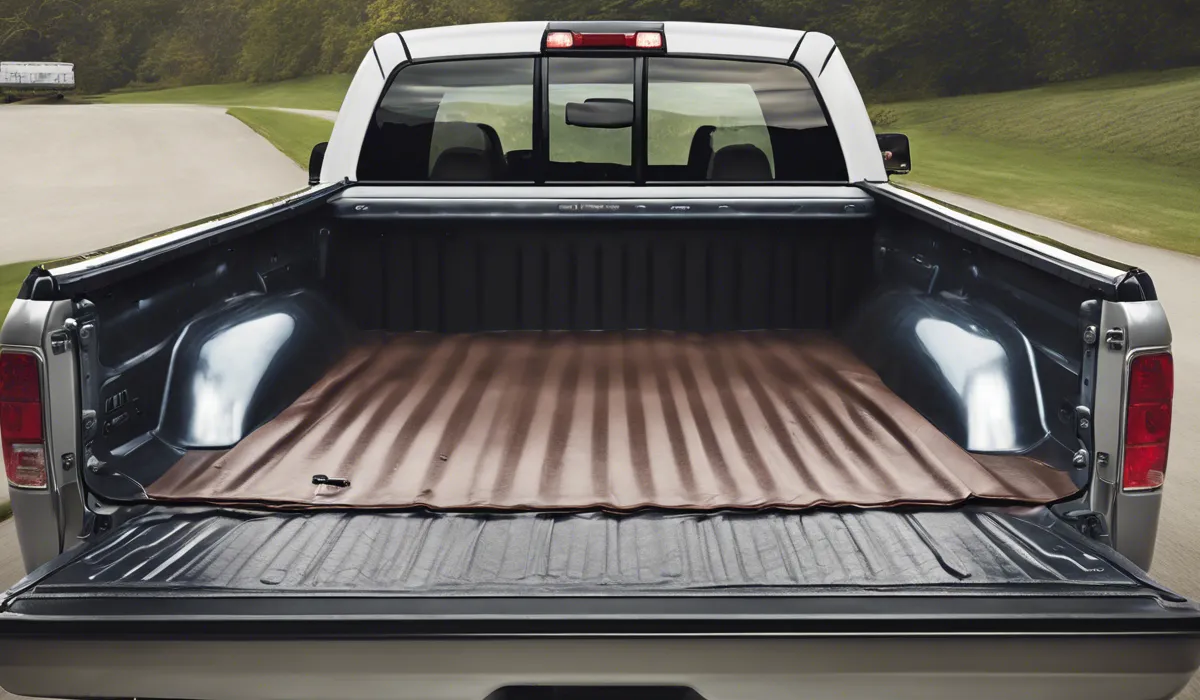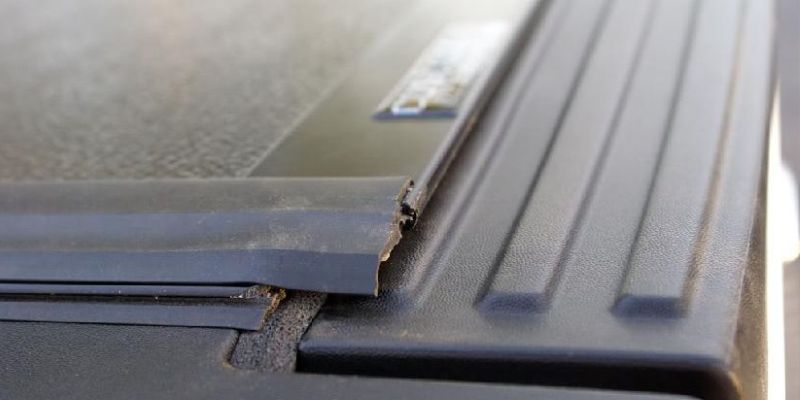To fix a leaking tonneau cover, first identify the leak source, then clean the area thoroughly. Apply silicone-based sealant on any gaps or cracks. Check the cover’s seals and replace them if they’re worn. Ensure proper alignment; misalignment can cause leaks.
Identifying the Source of the Leak

Conduct a Visual Inspection
Start by visually examining your tonneau cover for any obvious signs of damage.
Look closely for any tears, holes, or areas where the cover does not sit flush against the bed of the truck.
Pay attention to the corners and sides where water might seep through.
This step is crucial for determining the exact location and cause of the leak.
Search for Gaps and Holes
After a thorough visual check, look for smaller gaps or holes that might not be immediately visible.
Feel around the cover’s surface for any unevenness or use a flashlight to highlight any imperfections.
Sometimes, the smallest puncture can lead to significant leakage.
Perform a Water Test
If the source of the leak is not apparent, perform a water test.
Gently pour water over the cover and watch to see where the water enters the truck bed.
This method can help pinpoint the exact location of the leak, especially for elusive or small leaks that are hard to detect with a visual inspection alone.
Inspect Seals and Edges for Wear
Check the tonneau cover’s seals and edges, as these areas are prone to wear and tear.
Over time, seals can become brittle and lose their effectiveness, which can lead to leaks.
Look for any signs of cracking or degradation, which will indicate that these parts need attention during the repair process.
Repairing the Tonneau Cover

Clean the Affected Area
Before making any repairs, it is essential to clean the affected area. Remove any dirt, debris, or moisture.
Cleaning ensures the repair materials will adhere properly and provides a better seal against future leaks.
Seal Minor Leaks and Tears
For small leaks and tears, use a silicone-based sealant. Apply the sealant carefully, ensuring it fills the gaps or cracks completely.
Silicone sealants are weatherproof and flexible, making them an ideal choice for minor repairs on tonneau covers.
Allow the sealant to cure as per the manufacturer’s instructions before using the cover again.
Apply Repair Patches or Tape
For larger holes or tears, consider using repair patches or tape designed for tonneau covers.
These products are made to withstand the outdoor environment and provide a strong, watertight bond.
Clean the area around the hole, apply the patch or tape, and ensure it’s securely in place.
Replace Weather Stripping and Seals
If you’ve found worn-out weather stripping or seals, replace them to prevent water from entering.
New weather stripping or seals can restore the tonneau cover’s ability to keep moisture out.
Make sure to choose suitable materials that will offer durability and a good fit for your specific cover.
Adjust and Tighten Hardware
Loose hardware can cause gaps in the tonneau cover, allowing water to leak in.
Check all clamps, latches, and bolts, and tighten them if necessary.
In some cases, you might need to adjust the alignment of the cover to ensure a snug fit.
Preventative Measures and Maintenance

Clean and Lubricate Regularly
Maintain your tonneau cover by cleaning and lubricating it regularly.
This helps to keep the material supple and prevents the buildup of debris that can cause damage over time.
Use cleaners and lubricants that are safe for the cover’s material.
Periodic Seal and Hardware Inspection
Inspect the seals and hardware periodically to ensure they are in good condition.
Catching issues early can prevent leaks from developing.
If you notice any signs of wear, take the appropriate steps to address them promptly.
Adjust Tension and Alignment
Proper tension and alignment are vital for the effectiveness of a tonneau cover.
Over time, the cover may stretch or shift, so it’s important to adjust the tension and alignment as needed to maintain a tight fit.
Apply Protective Coatings
Consider using protective coatings to enhance the water resistance of your tonneau cover.
These coatings can extend the life of the cover and improve its performance in keeping water out.
Make sure to choose a coating that is appropriate for the material of your cover.
Utilize Shelter During Extreme Weather
Whenever possible, park your vehicle in a garage or under a cover during extreme weather conditions.
This can protect the tonneau cover from the harsh elements and reduce the risk of leaks.
If indoor parking is not an option, consider using a portable shelter or a vehicle cover for added protection.
FAQs About Fixing a Leaking Tonneau Cover
How do I find the source of a leak in my tonneau cover?
To find the source of a leak, inspect the tonneau cover carefully in good lighting, look for any visible gaps or cracks, and check around the seals for any signs of wear or damage.
What should I use to clean the area around a leak on my tonneau cover?
Clean the area with a mild soap and water solution, and ensure it’s completely dry before applying any sealant.
What type of sealant should I use on my leaking tonneau cover?
Use a silicone-based sealant that is compatible with the material of your tonneau cover to seal any gaps or cracks.
How do I know if the seals on my tonneau cover need to be replaced?
Inspect the seals for any signs of cracking, brittleness, or significant wear. If any of these conditions are present, it’s time to replace the seals.
Can improper alignment of my tonneau cover cause leaks?
Yes, improper alignment of your tonneau cover can create gaps that allow water to seep through, so ensure your cover is correctly aligned to prevent leaks.
Final Thoughts
Addressing a leaking tonneau cover involves locating the source of the leak, cleaning the site, and sealing any discovered gaps or cracks with a silicone-based sealant.
Inspect the cover’s seals for wear and tear, replacing as needed.
Additionally, ensure the cover is properly aligned, as misalignment can contribute to leaking issues.
